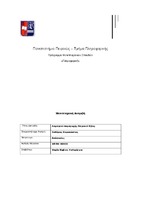Λογισμικό παραγωγής νιτρικού οξέος

View/
Abstract
The required raw materials for the contemporary production of the Nitric Acid are the anhydrous ammonia and the air. This specific Nitric Acid production module aims at the generation of HNO3 60% w/w and the 550 tons of 100% HNO3 capacity per day [550 MTPD]. Firstly the filtering and then the mixing of these two raw materials is executed in the mixer of the unit. The function of the unit is based on a dual pressure mechanism (Dual Pressure Process). This mechanism causes the oxidation of Ammonia in the combustion reactor with the use of a catalyst made of platinum (PT) and rhodium (RT) in an average feed pressure. Thereinafter, in the absorption column and under high pressure conditions, the absorption of the oxide gases which are produced is accelerated. The software developed for the Nitric Acid production unit incorporates a user management system, the administrator of which is authorized to create, delete and modify the accounts of the users that can initiate the process of the ΗΝΟ3 production. In particular, continuous checks during the production stages are executed in order to detect whether random values of pressure, temperature, flow and air which are selected within a range of values just above and just below of those that the specifications define are within the provided limits or not. In case that they are between these predefined limits, the system proceeds to the next check until the completion of the production. Otherwise, the erroneous random value is recorded in a database and in order to proceed to the next check, the system automatically picks the mean value of the predefined upper and lower limit of the value instead. The system administrator - besides the management of the user database and their accounts - can also view and print the incorrect values stored in the database that were produced the current or any other day. The development of the information system has been performed using the RUP (Rational Unified Process). All the diagrams (UML) have been created using this process. Finally, a bibliographic research has been carried out as part of this master thesis.


